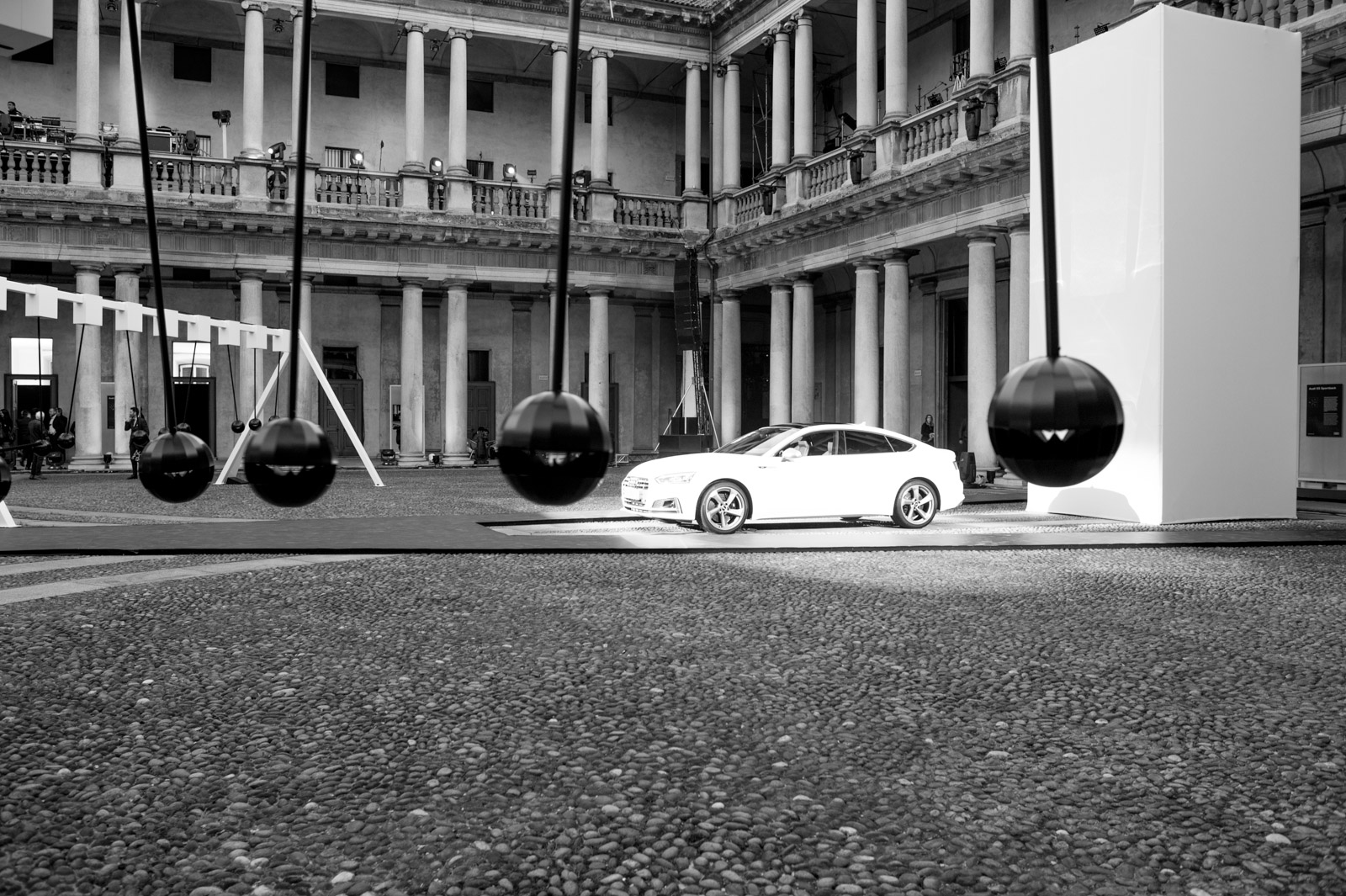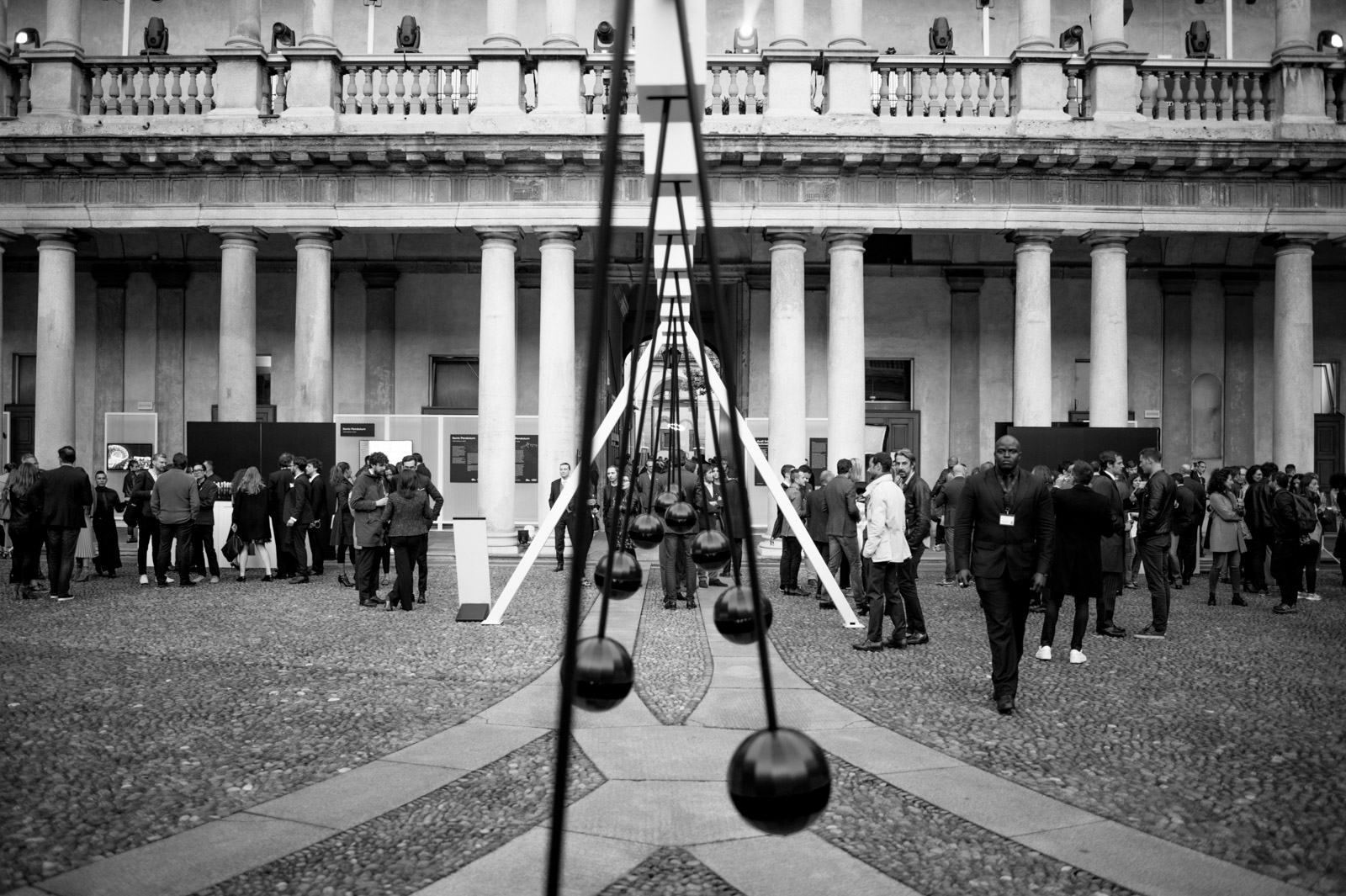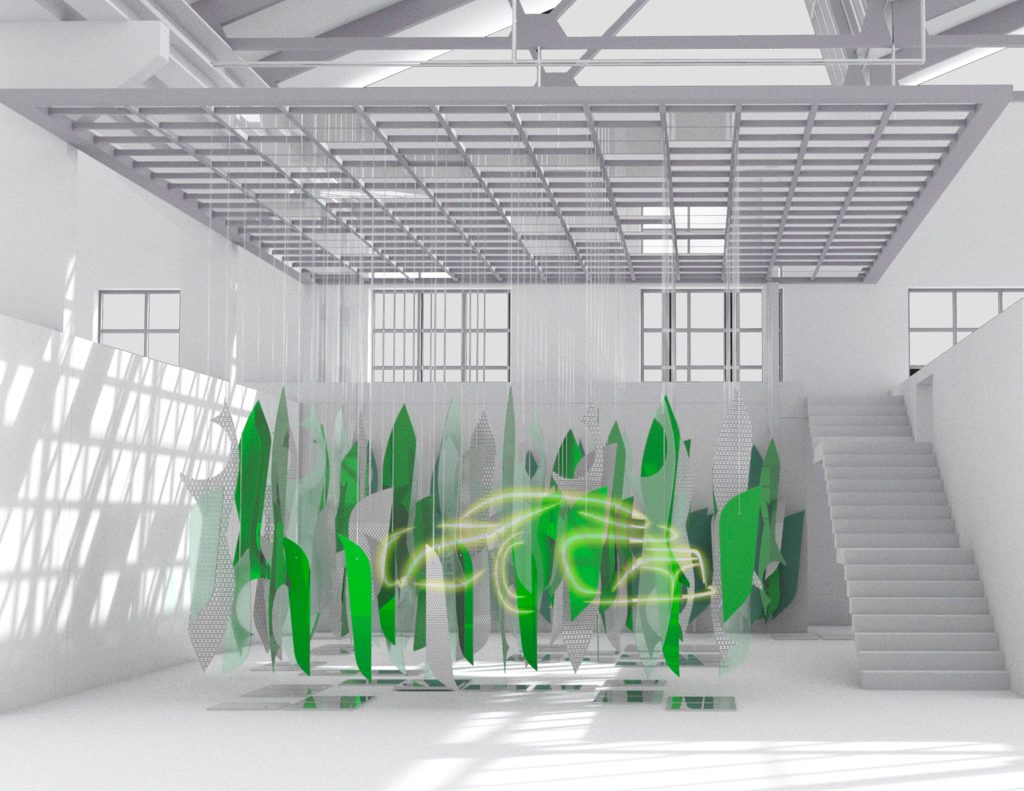Interview: Multimedia Artist Yuri Suzuki
The talented creative discusses his immersive installation for Audi during Milan Design Week 2017

One of the more powerful installations at Milan Design Week 2017 was London-based multimedia artist Yuri Suzuki’s Audi City Lab in the courtyard of the iconic Seminario Arcivescovile, a beautiful 17th century building rarely open to the public. The auto brand has been dedicated to developing technology and AI, and this collaboration with Suzuki is an incredibly creative and impressive exploration of that.
Like most of Suzuki’s work, this piece mixes kinetic movement with sound in a simple yet compelling way. The installation resembles a series of gigantic Newton’s cradles. Each ball is a speaker, and the balls move rhythmically to Suzuki’s hour-long ambient music soundtrack emanating from them, creating a multi-sensory experience that transforms along with the space. In a first for the artist, the soundtrack, cleverly, can be downloaded. Audi wanted to have the artwork use and speak to AI, one of the themes it explored in its series of panels at the space. We sat down with the artist to talk about his work and this installation.

This idea of multi-tiered experiences is important for Suzuki, who explains that this type of work is what humans naturally crave. He sees interactions with “Sonic Pendulum” as imitative of the sublime feelings artists like Brian Eno and Alexander Calder give viewers.

“I was thinking, ‘What if I created an algorithm which is reacting with people inside, simulating natural movement and creating a constantly changing soundtrack in the space?’” he says. The three large pendulums were centered in the seminary’s courtyard, with new Audis displayed nearby. Sonic Pendulum beautifully illustrates the brand’s passion for design, movement and art; the kinetic energy of the sculptures creating a tension with the space and the cars.

Using sensors that respond to people in the space and their movements, Suzuki was able to cater to their senses in the moment as they walked through the installation. Sensors measured the ambient noise level, and the speakers in the balls of the pendulum adjusted their output accordingly.
The sculpture registered people interacting with it, what was surrounding it, and reflected this back through the soundtrack and movements. Suzuki notes, “I wanted to physically simulate that movement with the pendulum.” He continues, explaining the second reason, “We needed to input some natural movement for teaching AI… We cannot really simulate natural movement from scratch.”

The physical aspect of the piece heightened this too, hoping to further place people into a relaxed state during the intensity of one of the busiest weeks in Milan all year. “The function of the pendulum also has meaning,” he notes. “This kind of definition of the sound which calms people down people is called an alpha wave… Your left ear and right ear have a defined frequency like a swing. You can have a great effect on people to help them calm down.” Unsurprisingly, this experimental nature was very much supported by Audi. “Audi was quite adventurous for this” project, the artist says.

“First of all, it’s not 100% demonstrating a car, but they really wanted to demonstrate the concept—the philosophy behind what they’re thinking as a company. That’s really fascinating.” He concludes, Audi “really wanted to demonstrate the concept, the philosophy behind what they are thinking about as a company and I feel like they were very brave for appointing me,” he laughs. “They understand the impact of sound, and they want to give opportunities to create adventurous projects.”
Hero image courtesy of Audi, sketch courtesy of Yuri Suzuki, all others by Josh Rubin










